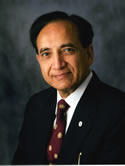A predictive nomogram for recurrence of carcinoma of the major salivary glands Journal Article
| Authors: | Ali, S.; Palmer, F. L.; Yu, C.; DiLorenzo, M.; Shah, J. P.; Kattan, M. W.; Patel, S. G.; Ganly, I. |
| Article Title: | A predictive nomogram for recurrence of carcinoma of the major salivary glands |
| Abstract: | IMPORTANCE This nomogram quantifies the risk of recurrence in patients with carcinoma of the major salivary glands. It may facilitate patient counseling on prognosis and may help guide management and posttreatment surveillance in these patients. OBJECTIVES To identify factors predictive of recurrence after primary surgical treatment of carcinoma of the major salivary glands and create a nomogram that could be used to predict the risk of recurrence in an individual patient. DESIGN Retrospective case series. SETTING Single institution tertiary care cancer center. PATIENTS After institutional review board approval, 301 patients with previously untreated malignant salivary gland tumors treated at our institution between the years 1985 and 2009 were identified. Among the 301 patients, the median age was 62 (range, 9-89) years and 156 (52%) were male. Patient, tumor, and treatment characteristics were recorded from a retrospective analysis of patient medical charts. MAIN OUTCOMES AND MEASURES Overall mortalitywas calculated using the Kaplan-Meier method. Disease-specific mortality and recurrence risk were estimated with cumulative incidence rate. Factors predictive of recurrence were identified using univariate analysis. A Cox proportional hazard model was used to select predictors for the predictive nomogram. RESULTS With a median follow-up of 43 (range, 1-264) months, the 5-year overall mortality, disease-specific mortality, and recurrence rate were 30%, 28%, and 33%, respectively. There were 70 recurrences (18 local, 12 regional, and 56 distant). The 5 variables most predictive for recurrence were age, grade, vascular and perineural invasion, and nodal metastasis. These variables were selected to generate the nomogram, which had a high concordance index of 0.85. CONCLUSIONS AND RELEVANCE We introduce a clinically useful nomogram that quantifies the risk of recurrence in carcinomas of the major salivary gland. By quantifying risk for an individual patient, this would enable the clinician to give more accurate prognostic information to the patient resulting in better patient counseling. |
| Keywords: | adolescent; adult; child; school child; aged; aged, 80 and over; middle aged; cancer surgery; survival rate; retrospective studies; major clinical study; cancer recurrence; neck dissection; cancer risk; recurrence risk; lymph node metastasis; neoplasm recurrence, local; proportional hazards models; risk factors; retrospective study; prediction; cancer mortality; proportional hazards model; nomograms; carcinoma; predictive value of tests; salivary gland neoplasms; kaplan meier method; univariate analysis; salivary gland carcinoma; nomogram; perineural invasion; parotidectomy |
| Journal Title: | JAMA Otolaryngology - Head and Neck Surgery |
| Volume: | 139 |
| Issue: | 7 |
| ISSN: | 2168-6181 |
| Publisher: | American Medical Association |
| Date Published: | 2013-07-01 |
| Start Page: | 698 |
| End Page: | 705 |
| Language: | English |
| DOI: | 10.1001/jamaoto.2013.3347 |
| PROVIDER: | scopus |
| PUBMED: | 23788168 |
| DOI/URL: | |
| Notes: | --- - "Export Date: 4 September 2013" - "Source: Scopus" |
Altmetric
Citation Impact
BMJ Impact Analytics
Related MSK Work






